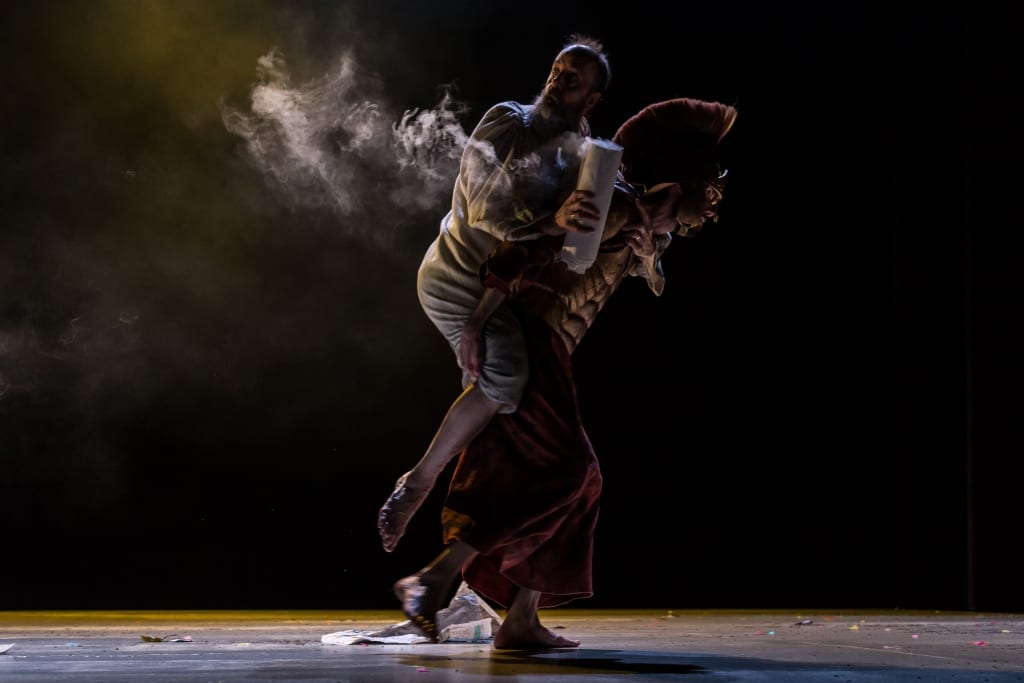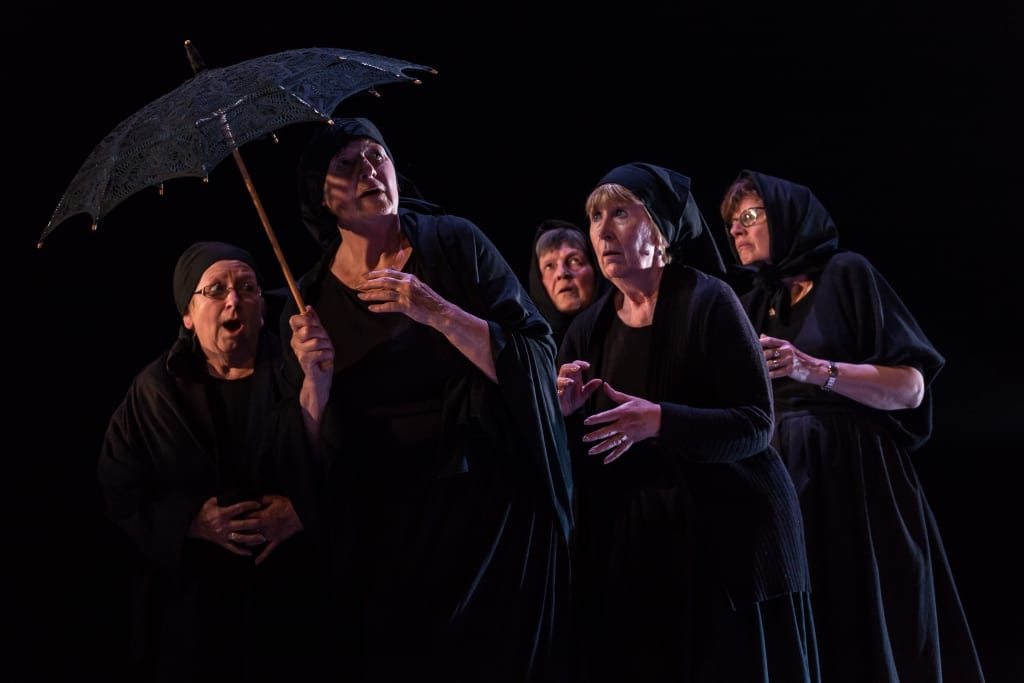The Hour We Knew Nothing of Each Other is a wildly ambitious piece, with 86 community cast members wordlessly bringing to life 450 characters in just 85 minutes on the Lyceum stage. On paper, the potential for catastrophe seems wince-inducingly high. In practice, it is something of a triumph.
The action, so far as it can be called that, occurs in a timeless, placeless space. Characters cross the stage again and again, seamlessly pouring in and out of the wings in a rush of humanity. Observing this flood has all of the peace and interest of people watching, with the added bonus of the surreal. Men being towed past in rubbish barrows and airborne boats tend not to be features of the typical high street.
The most touching scenes are those that are simplest and least exaggerated: two lovers exchanging notes in passing, moments of tenderness and support, spontaneous eruptions of joy. For every scene of petty crime and sorrow, there are two or three that bring a smile or outright laughter.
While there is a distinct Scottish theme – a kilted man carrying bagpipes got a good reception – the play’s sources are wonderfully eclectic. At one point, Old Testament Abraham hobbles by, leading Isaac; at another, Aeneas stumbles past, fleeing the burning Troy with his father on his back. There are references to contemporary themes such as terrorist attacks and the migrant crisis, but they are interspersed with more ancient actions, such as a man scattering corn by hand.
The stage gradually becomes littered with the detritus of the day – confetti and grain, rubbish bags and pebbles, sheets of newspaper blowing from side to side. It is hard to imagine any more effective way of conjuring up a well-worn city street.
The play certainly does not require any set. The designers at the Lyceum are capable of producing some truly breath-taking sets, but in this case, their best decision was to leave the stage completely bare, and let the cast conjure their stories for themselves. When the plain backdrop rises at the end of the production, the sheer amount of work required in costume making and changing is laid satisfyingly bare.

If there is a criticism, it is that the play would benefit from living up to its title and being a mere hour long. Between two periods of joyously watching the world go by, there is a slow and self-indulgent section in which nothing much happens, and what does happen is largely incomprehensible. The whole play loses tension and focus during this middle section, and the audience is rather inclined to do the same.
It is also valid to query just how representative of the Edinburgh community the Community Chorus really is. While it certainly mirrored its overwhelmingly white, middle-aged audience, it did not mirror the community visible at large on any Edinburgh street.
However, neither of these quibbles overly detract from what is both an ambitious and successful piece. The Hour… sets out to let the audience watch the world go by, and the audience gets to see pretty much all of it. Heart-warming and heart-breaking, funny and sad, The Hour… is full of vignettes that make a lasting impression. Having watched it, you truly feel you’ve seen the world.

